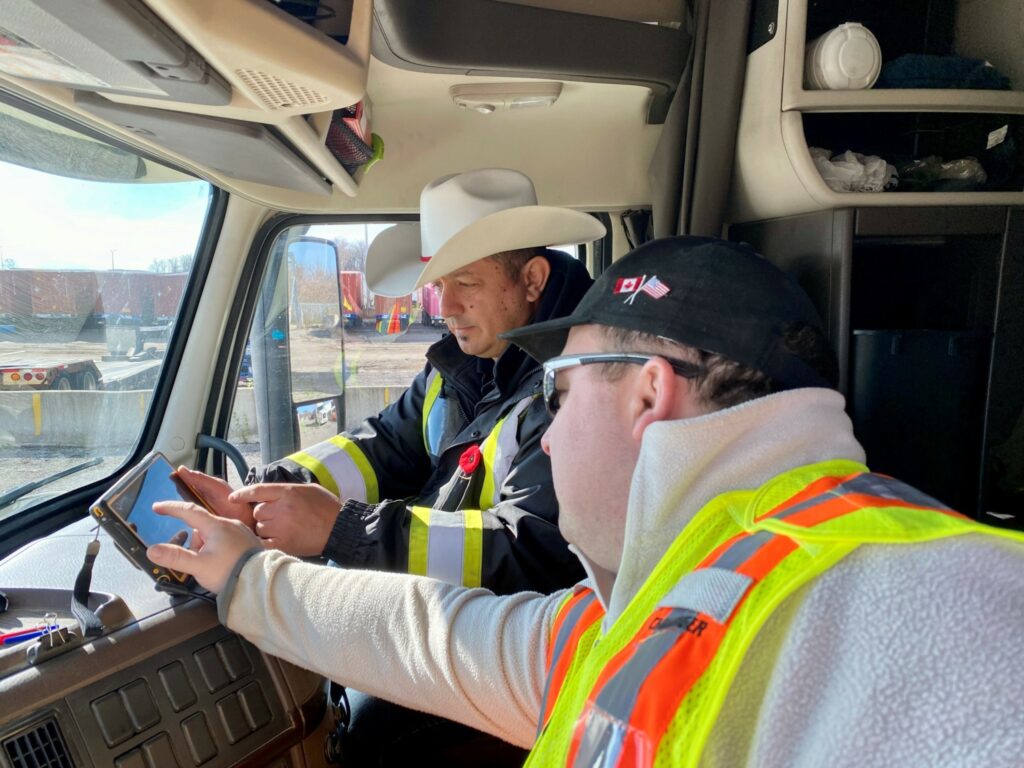OTA favors graduated approach to licensing truck drivers
The Ontario Trucking Association (OTA) is encouraging the provincial government to consider a graduated approach to licensing truck drivers, based on vehicle configurations and a licensing endorsement regime.
The OTA outlined this new training direction in a letter to Prabmeet Sarkaria, minister of transportation, before industry-wide consultations planned as part of the Safer Roads and Communities Act.
The OTA board has been discussing the issue of driver training since the fall and has provided direction on concepts that can shape what the future of truck driver training in the province could look like.

“OTA believes introducing a graduated approach to licensing truck drivers, based on the configurations they operate and through a licensing endorsement regime, is the direction that needs to be considered by the Ministry,” said OTA’s senior vice-president of policy, Geoff Wood, in a news release.
Prospective truck drivers would enroll in an entry-level truck driver training program at the beginning of the training journey and, upon successful completion, would be eligible to participate in a certified trucking company or driver training school program to earn a specific configuration endorsement.
Once an endorsement is obtained, the driver will be fully licensed and certified to operate the specific configuration.
“There is already a precedent in that responsible trucking operations are already engaged in the endorsement phase concept, albeit not formally recognized,” OTA said in a release, explaining that in the industry, it is currently known as boarding, upskilling, or mentoring processes.
Usually, these programs are self-funded by trucking companies and borne out of necessity, based on several factors like driver’s insurability and future ability to be efficient, which is a productivity consideration for the carrier, OTA said. It added that since not all fleets take on this responsibility, road safety can be impacted.
“Each configuration has its own unique operating and maneuverability characteristics, [and] is designed for carrying different types of cargo and as the number of axles or semi-trailers increase in the configuration, so does the potential weight of the vehicle. All these factors require specific training and skills to ensure that drivers can safely and efficiently operate these vehicles,” Wood said.
As this new endorsement concept is discussed, it would need to have a certification component and address both funding and insurability considerations.
According to the OTA, the funding would ideally be institutional, similar to that available to other designated occupations, and available for qualifying carriers to offset some of the costs they currently incur. The association believes this could also incentivize carriers to train new drivers.
The design of a robust and proactive oversight regime for carriers, driving training schools and trainers engaged in the onboarding and mentoring endorsement process would be critical, Wood said.
Have your say
This is a moderated forum. Comments will no longer be published unless they are accompanied by a first and last name and a verifiable email address. (Today's Trucking will not publish or share the email address.) Profane language and content deemed to be libelous, racist, or threatening in nature will not be published under any circumstances.
-
I agree that it needs to happen part of the carbon tax plus 1 cent per kn for aU S miles for any carrier that is based of Canada to tra a ( in my opinion)training program and to provide insurance for smaller fleets farms and private in-house freight services to help provide and pay for the insurance for the first 2 yrs for trucking bus and disabled taxi and van transport is the only way it will happen and the drivers still make a fair hourly wage to survive for the first yr in my opinion.
That may be fine and a good program but not helping small companies with 1 or more trucks and older drivers retiring and needing new drivers. We can’t hire any driver out of training school with a class A Z endorement unless he or she has 3 years experence so said the insurance companies. Acording to them it is a provincial rule probably lobbied by them.
The goverment should rethink the situtation. Never mind the fact that a lot of these business are seasonal and can’t hire year around drivers.
-
Ont gov needs to step up and provide insurance for all new truck , bus disabled transport drivers and run it as a non-profit and take 1 cent per every km drove in ont by and bus that can carry 10 or more passengers and truck of 10 000 or more kg plus the premium from the said drivers so they can be insuranced for all farms and construction companies and private companies including city transit and smaller towns and rural gov areas. Also a tax of $100/ Mt per vehicle for any fleet that self insures and has a yard or office in Ontario Canada
If we had a plan have these young people work 1 yr in a repair shop while they have DZ or before getting a D Z then go to aAZ I believe we could have as good as truck drivers as we had from. WW2 untill 1984 in my opinion. I also believe that maintaining the units would be much better and we wouldn’t have a shortage of mechanics. This could be done with the high school and the people who bring in foreign students that end up as truck drivers in my opinion.
Nothing new here–these, and many other ideas, were proposed and discussed back in the 90s. While most of them are good ideas, none of them will get implemented unless–and until–the right government is elected [along with knowledgable, responsive and experienced Ministers] and until industry welcomes those ideas. Unfortunately, photo ops, posturing and inaction continue to rule the days of our lives…yes, just like a never-ending soap opera.